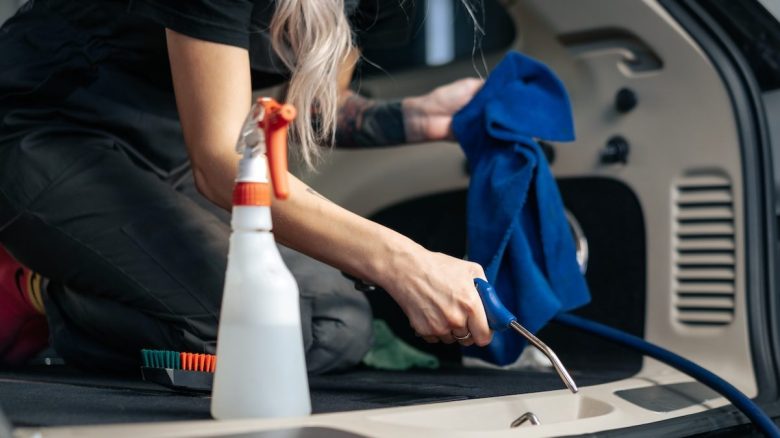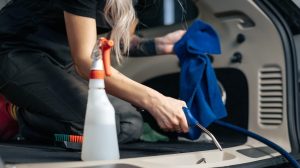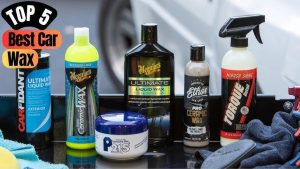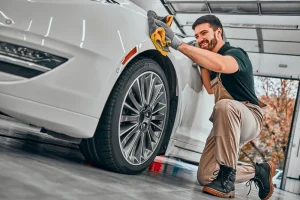Achieving a showroom shine for your car is not just about keeping it clean; it’s about mastering the art of waxing. Car waxing has long been an essential part of vehicle maintenance, offering both aesthetic and protective benefits. In 2024, car enthusiasts and everyday drivers alike are seeking DIY techniques that not only provide a stunning finish but are also easy to perform. Whether you’re a novice or a seasoned DIYer, this guide will help you achieve that gleaming, flawless look with the best car waxing techniques.
Understanding the Importance of Car Waxing
Car waxing is more than just making your car look glossy. It serves a dual purpose. First, it enhances the car’s appearance, giving it a smooth and shiny finish that mimics the look of a brand-new vehicle. Second, it provides a layer of protection to the car’s paint. The wax forms a barrier between the car’s surface and external elements like UV rays, rain, dirt, and pollutants. This protective layer can help prevent scratches, fading, and other forms of damage that can affect your car’s appearance over time. Regular waxing also makes washing easier, as dirt and grime are less likely to stick to a waxed surface.
Choosing the Right Type of Wax
Selecting the right type of wax is crucial for getting the best results. In 2024, car wax products come in a variety of forms—liquid, paste, and spray. Each has its own advantages. Paste waxes tend to provide the longest-lasting shine and protection, but they require more effort to apply. Liquid waxes are easier to work with and spread evenly, making them a popular choice for DIY enthusiasts. Spray waxes, while not as durable, are the easiest to apply and can be used for quick touch-ups in between more thorough waxing sessions.
It’s important to consider the climate and driving conditions you experience when choosing a wax. For example, if you live in an area with a lot of sun, a wax that offers UV protection is ideal. Similarly, if you frequently drive in rainy conditions, you might want to choose a wax that emphasizes water repellency.
Preparing Your Car for Waxing
Preparation is key to achieving a flawless wax finish. Before applying wax, your car must be thoroughly cleaned. Dirt, dust, and grime can create scratches if trapped under the wax, so it’s essential to wash your car using a pH-balanced car shampoo. Pay special attention to areas where dirt tends to accumulate, such as around the wheels and lower panels.
Once your car is clean, ensure it is completely dry before applying wax. Water spots can interfere with the wax application and leave a streaky finish. If possible, move your car into a shaded area to prevent the sun from causing the wax to dry too quickly.
The Application Process: Waxing for a Mirror-Like Finish
When applying car wax, the technique matters as much as the product you choose. In 2024, car detailing experts emphasize the importance of using microfiber cloths or applicator pads. These materials are gentle on the paint and help evenly distribute the wax. Start by applying a small amount of wax onto the cloth or pad—less is often more when it comes to wax application.
Work in small sections, applying the wax in a circular motion. This ensures that you cover the surface evenly and avoid streaks. Take your time during this step, as rushing can lead to uneven application. Most waxes should be left to dry for a few minutes before buffing, but it’s important to follow the specific instructions provided with the product you’re using. Once the wax has dried to a haze, it’s time to buff it off.
Buffing the Wax to Perfection
Buffing is the final step in the waxing process, and it’s where the magic happens. This is when your car’s surface transforms into the glossy, showroom-like shine you’ve been aiming for. Use a clean, dry microfiber towel for this step. Again, work in small sections, using a circular motion to remove the hazed wax.
As you buff, you’ll notice the surface becoming increasingly reflective and smooth. Pay attention to areas like the edges of panels, as these spots can sometimes retain excess wax. Take your time with the buffing process, as the more thoroughly you buff, the more vibrant the finish will be. Some enthusiasts prefer using an orbital buffer for this step, but manual buffing with a microfiber cloth will also give excellent results.
Maintaining the Shine: How to Extend the Life of Your Wax Job
After all your hard work, you’ll want to maintain that showroom shine for as long as possible. The longevity of a wax job depends on a variety of factors, including the type of wax used, weather conditions, and how often you drive your car. Generally, a high-quality wax should last anywhere from six weeks to several months.
To extend the life of your wax job, wash your car regularly using a gentle, pH-balanced shampoo. Avoid using harsh detergents or automated car washes that can strip the wax off the surface. Additionally, consider using a spray wax or quick detailer between full wax jobs. These products are easy to apply and can help maintain the shine and protection of the wax.
Dealing with Common Waxing Mistakes
Even with the best intentions, mistakes can happen during the waxing process. One common issue is applying too much wax. This can result in streaks and a hazy finish that is difficult to buff out. To avoid this, remember that a little wax goes a long way. Another mistake is waxing in direct sunlight or on a hot surface, which can cause the wax to dry too quickly and leave a patchy appearance.
If you notice streaks or uneven areas after buffing, don’t panic. Simply reapply a small amount of wax to the affected area and buff it out again. Practice makes perfect, and the more you wax your car, the better you’ll become at achieving a flawless finish.
2024 Waxing Trends: New Products and Techniques
As technology continues to advance, so do the products available for car care. In 2024, there are several new trends and innovations in the world of car waxing. Ceramic-infused waxes are gaining popularity for their durability and enhanced protection. These products combine the benefits of traditional wax with the long-lasting properties of ceramic coatings, providing a superior level of shine and protection.
Another trend is the rise of eco-friendly waxes. As more car owners become conscious of their environmental impact, manufacturers are developing waxes that are biodegradable and made from natural ingredients. These products offer the same high level of performance without the use of harsh chemicals.
The Benefits of DIY Car Waxing
Waxing your car yourself has several advantages. First and foremost, it allows you to take pride in the appearance of your vehicle. There’s a sense of satisfaction that comes with achieving a showroom shine on your own, without relying on a professional detailer. DIY waxing is also more cost-effective, as professional waxing services can be expensive, especially if done regularly.
Additionally, waxing your car yourself gives you complete control over the products you use and the level of care you put into the process. You can experiment with different types of waxes and techniques to find what works best for your car and your preferences.
Conclusion
Waxing your car is an essential part of maintaining its appearance and protecting its paint. With the right techniques and products, achieving a showroom shine is well within reach, even for DIY enthusiasts. By following the steps outlined in this guide—choosing the right wax, preparing your car, applying the wax correctly, and maintaining the finish—you can enjoy a beautifully polished car that turns heads wherever you go. Whether you’re preparing for a car show or simply want to keep your vehicle looking its best, these DIY car waxing techniques will help you achieve a stunning shine in 2024 and beyond.




